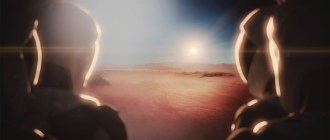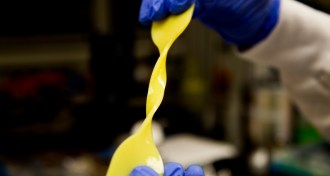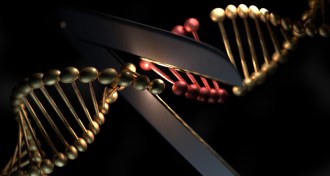All Stories
-
 Astronomy
AstronomyFast radio bursts may be from a neutron star orbiting a black hole
A repeating fast radio burst has twisted waves, suggesting its home has an unusually strong magnetic field.
-
 Life
LifeReaders wrangle with definition of ‘species’
Readers asked about the definition of "species," a new atomic clock and how a neutron star collision produces heavy elements.
-
 Science & Society
Science & SocietyWe’ll be watching the skies, plus a lot more, this year
Acting Editor in Chief Elizabeth Quill predicts 2018 could be a year full of important space discoveries.
-
 Planetary Science
Planetary ScienceHow to keep humans from ruining the search for life on Mars
As the race to put humans on Mars heats up, researchers worry they are running out of time to find life on the Red planet.
-
 Materials Science
Materials ScienceThis artificial cartilage gets its strength from the stuff in bulletproof vests
One of the key ingredients in this artificial cartilage is a nanoversion of the synthetic fiber in body armor.
-
 Health & Medicine
Health & MedicineHormone replacement makes sense for some menopausal women
For healthy women within 10 years of menopause, the benefits of hormone therapy for relief of hot flashes or other symptoms may outweigh the risks.
-
 Particle Physics
Particle PhysicsMagnets with a single pole are still giving physicists the slip
Using data from particle accelerators and dead stars, scientists eliminate some possible masses for magnetic monopoles.
-
 Animals
AnimalsWhy some birds of paradise have ultrablack feathers
Birds of paradise have superblack feathers because of tilted, spiky microscopic features in their feathers.
-
 Neuroscience
NeuroscienceWebsite invites you to probe a 3-D human brain
Getting up close to the human brain is easy with BrainFacts.org’s interactive organ.
-
 Genetics
GeneticsCRISPR gene editor could spark immune reaction in people
Immune reactions could shut down CRISPR/Cas9 gene editing.
-
 Climate
ClimateWarming ocean water is turning 99 percent of these sea turtles female
Green sea turtle populations in part of the Great Barrier Reef are becoming increasingly female due to higher ocean temperatures.
-
 Microbes
MicrobesNew pill tracks gases through your gut
Swallowing these pill-sized sensors could give new insight into what’s going on in your gut.